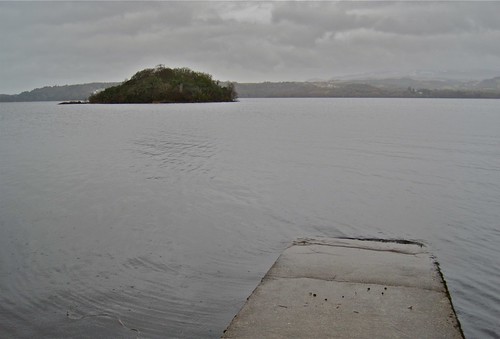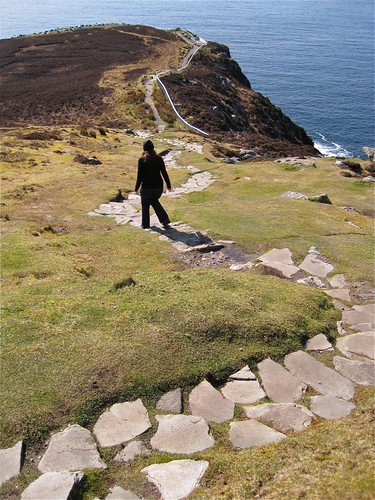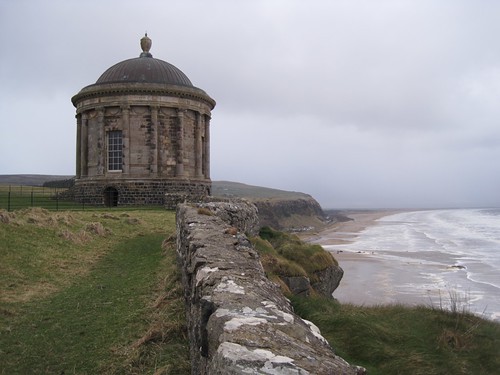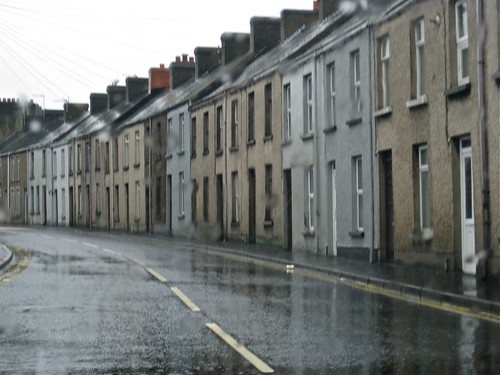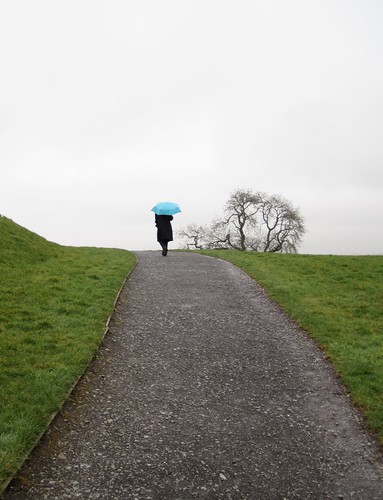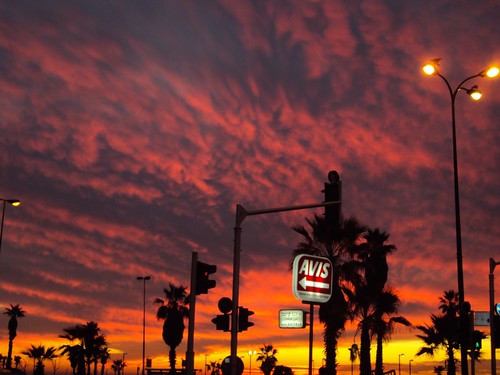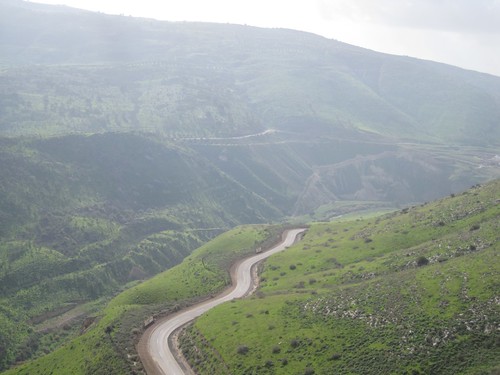I had wanted to check out Newgrange, a passage tomb built by the ancient Irish well before the Egyptians built the pyramids. It is a grassy mound, essentially, on a hill-top, and not as large or geometrical as the pyramids, but quite large. It was built with a tunnel (passage) going part-way inside, with spiral carvings now covered in places by graffiti from the last few centuries. Quite amazing, yet it was hard to feel anything but frozen on a day as cold and rainy as this one was. Here's Karen walking very rapidly around the circumference of the mound, after which we appreciated the over-priced hot chocolate in the gift shop. One quasi-mystical attraction of this mound, however, is that the passage is constructed in such a way that every year on the winter solstice the light of the sun, as it comes over the distant hills at sunrise, shines directly through the passage to the back of the innermost chamber. For many centuries the entrance had been partially blocked and it wouldn't have been possible to see this, and yet local villagers mentioned rumors about it. It wasn't until the 1960s, when the tunnel had been excavated and repaired, that the chief archeologist went to the site by himself on a chilly but clear December morning and stood in the chamber and was the first person in over a millennium to witness the tunnel light up in the way it had been designed to do.


